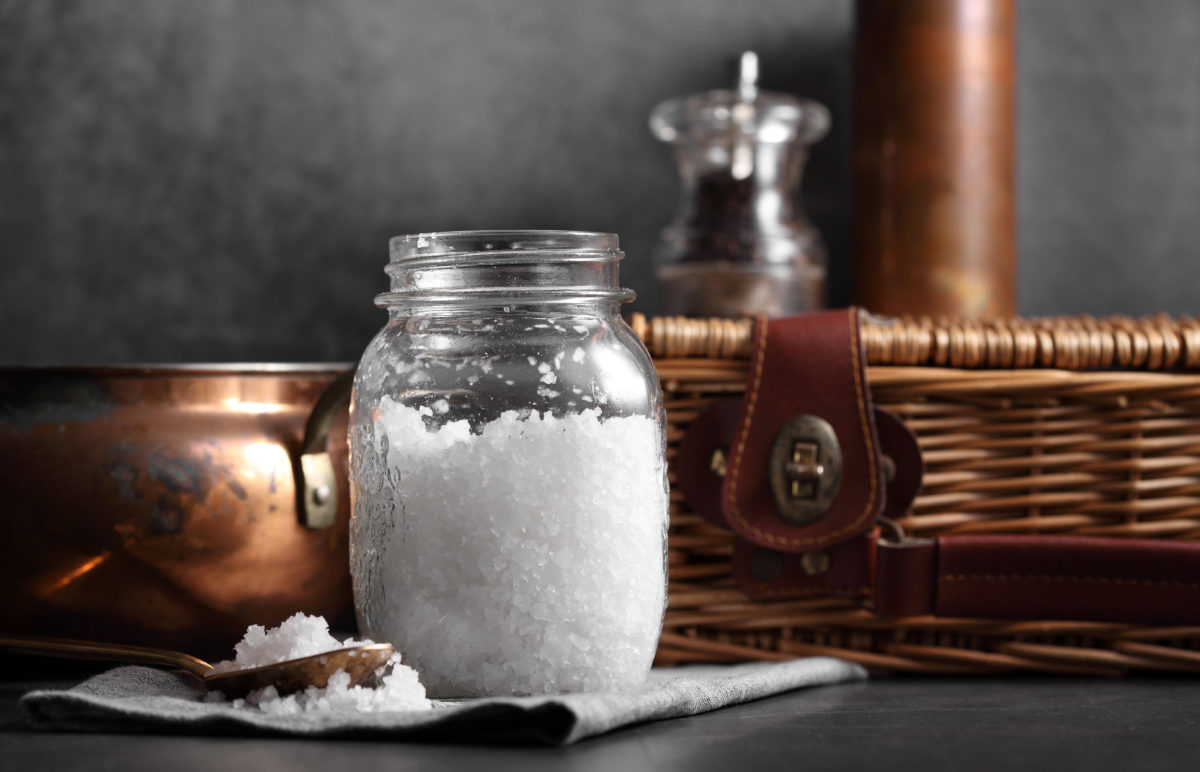We hear a lot about salt intake, but do we really understand how much sodium is too much? And why? Let’s take a closer look at sodium consumption and what it means for our health.
Why do we need sodium?
First, a little explanation of sodium. Salt and sodium are not exactly the same thing. The chemical name for the spice that we call “salt” is sodium chloride. A teaspoon of salt contains about 2,300 mg of sodium. Your body needs the sodium in salt to maintain its proper balance of fluids. Sodium also helps your body transmit nerve impulses (electrical signals) and helps your muscles function.
If you don’t get enough sodium, your body tends to hold onto fluids. You’ll become weak, fatigued, possibly confused, and you may have some muscle cramps.
If you consume too much sodium, though, your body tends to react by directing extra water into your blood vessels. The amount of blood in your blood vessels increases, and then your cardiovascular system has to work much harder to pump that blood around your body. It can put extra strain on your heart and cause your blood pressure to rise.
How much do we need?
Your body needs about 500 mg of sodium per day to function normally, according to the American Heart Association. The AHA also recommends no more than 2,300 mg of sodium per day. But ideally, you’d want to limit your sodium consumption to about 1,500 mg per day, especially if you have heart disease or high blood pressure.
Unfortunately, the typical American consumes more than 3,400 mg of sodium each day, and men tend to eat more sodium than women.
Which foods have the most sodium?
Many of us eat a lot of salty food for one very important reason: it’s easy. Many pre-prepared foods and meals in restaurants are a lot higher in sodium than the food you’d make at home. But even some of the convenience foods we stash in our kitchens can be full of sodium. Take a look at this list and see how much food you regularly consume:
- Canned vegetables. Grab a can of veggies out of your pantry and scan the nutrition label for the sodium content. It may be a lot higher than you realize. Try getting a no-salt-added version when it’s available and adding your own instead.
- Processed foods. This can include everything from snack crackers to processed cheese to boxes of scalloped potato mix to pre-packaged muffins or boxed pasta dishes and other types of instant noodles. If you can choose a fresh food instead or only eat these foods on an occasional basis, you may be better off.
- “Mixed dishes.” Pizzas, burgers, soups, and seafood dishes fall into this category, which accounts for 44% of sodium in the average American’s diet. If you love them despite their sodium content, try to remember that moderation is key.
- Condiments. Soy sauce, marinades, and barbecue and steak sauces often contain huge amounts of sodium. You can usually buy a lower-sodium version, or choose another type of condiment, herb, spice, or citrus zest to flavor your food.
- Smoked or cured meats. Bacon, sausage, and other meats like cold cuts and beef jerky can contain high levels of sodium. Tennesseans love these foods, and even sometimes toss into a simmering pot of vegetables like black-eyed peas or collard greens. So consider looking for lower-sodium alternatives or eat these foods more sparingly.
- Broth. Using packaged or canned broth or stock can be a great way to kick-start dinner, but they can contain hundreds of milligrams of sodium. Canned soups can also be high in sodium so keep this in mind when planning your meals for the week.
What are surprisingly high-sodium foods?
You probably already knew about most of the sodium-rich foods listed, but here are some foods that contain more sodium than you might think.
- Bread. A slice of bread could contain 200 mg of sodium.
- Milk. A cup of 1% milk contains 100 mg of sodium.
- Instant pudding. Even the low-sugar versions of this quick-fix snack can contain hundreds of milligrams of sodium per serving.
- Pickles and olives. You might be less surprised to learn these salty-tasting foods contain substantial amounts of sodium. A medium pickle has 785 mg of sodium, and a cup of black olives has 992 mg.
- Spice blends. If you’re grabbing a spice blend to sprinkle over some veggies or roasted chicken, stop to read the label. A teaspoon of chicken spice blend can have 240 mg of sodium.
Some products will be labeled “reduced sodium” or “low sodium,” which can help you in making a decision.
How can you make better choices regarding sodium?
If you want to make informed decisions, read nutrition labels carefelly, even if the packaging says a product has “reduced sodium.” And don’t assume a food that doesn’t seem salty has a healthy amount of sodium.
Here’s another tip: taste your food before you reach for the salt shaker. If the food isn’t salty enough for your liking, consider whether there’s anything else you could do to boost the flavor, like adding pepper or squeezing a little lemon juice instead.
Get more information about specific health terms, topics and conditions to better manage your health on bcbst.com. BlueCross BlueShield of Tennessee members can access wellness-related discounts on fitness products, gym memberships, healthy eating and more through Blue365®. BCBST members can also find tools and resources to help improve health and well-being by logging into BlueAccess and going to the Managing Your Health tab.



WellTuned provides inspiration and practical advice for healthy living.
WellTuned does not offer medical advice. Any personal health questions should be addressed to your doctor.